#D-Lab
Explore tagged Tumblr posts
Text



✨ NOUVEAUTÉ EXCLUSIVE DANS MA BOUTIQUE ! ✨
Envie d’un corps purifié, d’un teint éclatant et d’un métabolisme boosté ? Découvrez le Collagène Détox, l’allié parfait pour éliminer les toxines, réduire les sucres et révéler une peau lumineuse !
✅ Détoxifie et purifie l’organisme
✅ Illumine le teint naturellement
✅ Favorise une silhouette plus légère
Ne manquez pas cette révolution bien-être ! Commandez dès maintenant et offrez à votre corps ce qu’il mérite.
📲 Disponibilité limitée – Shoppez vite !
https://www.jolimoi.com/index.php?controller=registration&styliste=Tarell77
#D-Lab#beautiful women#black beauty#socialselling#beautiful#jolimoi#stylist#amazing beauty#beauttiful girls#collagene#cosmetics#detox#bodyroutine#foodsuplements#complètement alimentaire
0 notes
Text
The Wrath of Pixie Tinselplum, with Nocturna Hollygloom!
Short Stories: Tales from The Christmas Event and Beyond Well. I transformed my little house into a little treehouse, and I was loving it! I had a nice living space, a little study, a modest kitchen, and a bedroom loft. What more could a slightly gothy Christmas elf need? I’ll tell you what I didn’t need. An uninvited guest! I had been out all night carolling in graveyards with a bunch of…

View On WordPress
#Almita#Ancient Mole#Andore#Apple Fall#BH9#Cazimi#Celeste#Celesticat#Cerridwen&039;s Cauldron#Chronos Mole#CKit Falconry#Coco#D-Lab#Dahlia#DeeTaleZ#Doe#Dreadfully Dark#Dreamscapes#EarthStones#Fontaine#Foxlore#Gwen Enchanted#Happy Day! parties#Happy Mood#Hexumbra#HPMD#Kaithleen&039;s#Kara Nightsong-Ergenthol#Kraftwork#Lantian/Flox
0 notes
Text
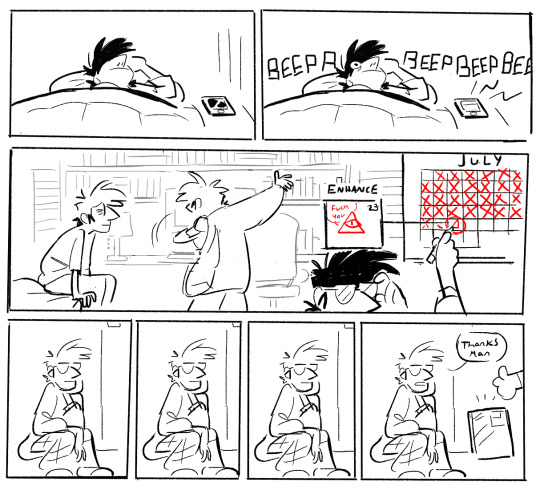
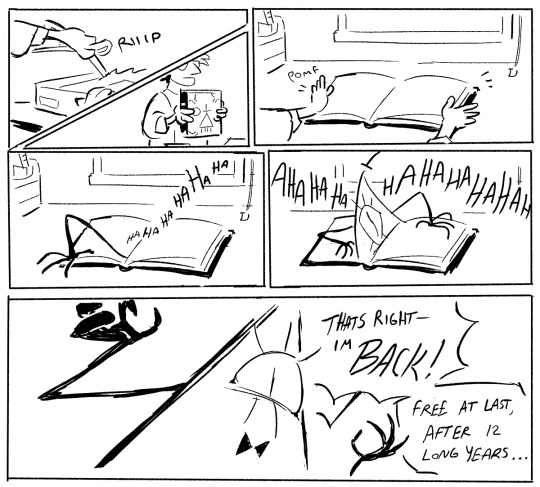
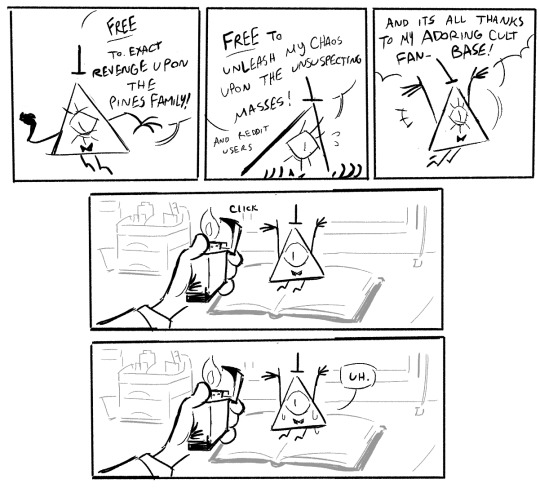

I drew this extremely quick comic back at the start of july, before anyone had gotten their books early, and I had assumed we were all going to be seeing it around the same time. clearly that's not how it worked out and I've already seen a couple of... things... (not to mention I'm getting it on the 26th- whoops) which kind of minimizes the point of posting this, but I figured I should at least get it out of my drafts.
anyway, I don't like that guy. but I'm really glad this show has been in my life regardless of any mixed feelings on the book. so... here's to everyone who still cares about the parts of gravity falls that don't revolve around the hot topic triangle
#gravity falls#lab creations#bill cipher#comics#hopefully this is actually funny sorry I drew this like... weeks in advance#wanted to do something else but I might reserve that for afterwards if I feel up to it#and I do still have that d&d&md comic in the works...
653 notes
·
View notes
Text
got genshin on the mind again
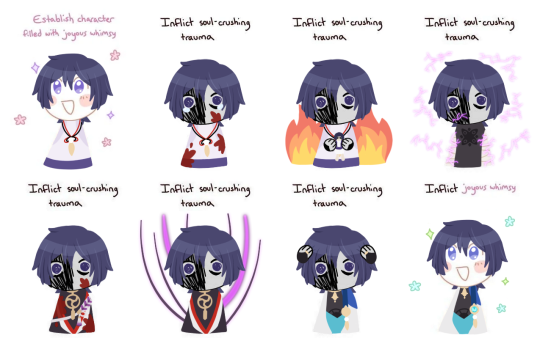
#if i think too hard about wanderer i get SAD again#ououghhhh... the way he was so kind and caring... and even after everything he still is deep down...#how even all of dottores manipulations couldnt change who he was at his core - a good person...#ok ill spare you all the essay i could probably write lol#genshin impact#wanderer#scaramouche#genshin#kabukimono#moxie draws#sigh. me when a character is a clone/homunculus/lab experiment with trauma <3#(d. dont read too far into that ok)
261 notes
·
View notes
Text


Space baby.
#oooh space baby!!!#I have 0 idea what it’s about but i love it already#also#fun fact: space baby drops two days after my birthday :D#my art#starkid#starkid fanart#space baby#tessa netting#sk labs
285 notes
·
View notes
Text








Been working on some idv charms for next year And a little shop update, I'll be closing it on November 10 for the holidays! The next reopening will be around February 2025
#it took 2 years but tracys finally joining luca and the rest of the lab rats :"D#happy halloween! get booped!!
242 notes
·
View notes
Text
watched c2e91 and this is what i think the whole episode was

#“d-do you want to be my lab partner 🥺?” - caleb. probably#shadowgast shitpost tbh#critical role#mighty nein#shadowgast#patopq#my art#critical role fan art#i GUESS#dumbass doodle#critical role fanart
128 notes
·
View notes
Text
About pirates and their treasure (a theory)
You know what they say, right? X marks the treasure. Luffy has a huge X on his chest, where his heart is. Buggy has big crossbones painted all over his forehead. Chopper's hat bears the X mark. Strawhats used to have an X mark on their hands in their famous farewell scene with Vivi.
There are many really ridiculous theories trying to connect the X on Chopper's hat to the main treasure of One Piece, claiming it points towards Long Ring Long Land because the dots surrounding the X (post-timeskip) remind them of that island's shape. Don't worry, this won't be one of those theories. In fact, we're going completely different direction here, and by the end of this post you might instead start to vomit rainbows of happiness. Don't blame me if that happens :D

Let's start off with this mysterious occurance. Both Chopper and Franky mistake the symbol for danger with that of a pirate flag. What's up with that? Do those two scenes have anything in common?

Let's take a look at Hiluluk trying to explain the meaning of skull and crossbones. "This shows there's nothing a man can't do", "it makes man fight like a pirate", "it's the symbol of man's faith", "thanks to it the man rejects impossibilities". To understand this, let's take a closer look at history of Chopper's hat that bears an X, because it's for sure connected to this idea.

Chopper got that hat as his first ever gift, from his first ever friend, as his very first peace offering. Triple first meaning. And he got it from his most favourite person in the world. That's why it's his treasure from now on. Both Chopper and Hiluluk have matching hats from now on.

Hiluluk has his "treasure" symbol on his medical suitcase, because it's thanks to the specimens he keeps there that he can cure people (later it's the same for Chopper and his medicine bag, also bearing an X). Being a doctor and curing people is his treasure. Kureha is wearing a shirt with a cherry blossom image on it, just like on Hiluluk's flag. The symbol on the shirt is close to her heart. That's because Hiluluk was her treasure. That's why she picked his dream and took care of Chopper. Soon Chopper becomes her treasure as well.

Kureha and Hiluluk bantered with each other all the time, but they also knew each other for ages. Hiluluk knew that Kureha isn't overly emotional, but that he can count on her. After all she always helped him without taking any money for it. Her actions are honest, unlike her words. who does it remind me of? Do you catch the drift?
Pirates love their treasures. But pirates are just people, and actually for most people their biggest treasure can be something like a memento, autograph or other object holding emotional value, but if we put it in the context of One Piece we have for example Chopper's hat. Obviously it's his treasure, but not because it's a hat, but because it's a gift from Hiluluk. They both wore hats from then on and it symbolically connected them together. That connection is what is Chopper's actual biggest treasure. The reminder of love and acceptance he received from the most important person to him.
Okay, let's switch to someone else:

Did you know Nami and Nojiko wear matching bracelets? Those bracelets are cheap and worthless, the only value they carry is that they connect the two girls, no matter where they are. That's why those bracelets are their treasures, because they mark each other and serve the purpose of a symbolical connection between them.
Remember Vegapunk's broadcast when Nojiko declared she's not gonna listen to it anymore and instead went back to her tangerine groves? That's because she understood, in case the world is truly going to end, the least she can do is to take care of Bellemere's tangerines, because that's also a treasure for both her and Nami. And she for sure wants to keep those tangerines in top shape for her sister. All she can do to help her is just to do her best and have faith.

Next stop is Brook and Laboon. This theory explains why Brook's afro is so important to him. It's his treasure, because it reminds Laboon of a whale/himself. Rumbar Pirates even mentioned that Brook's afro looks just like Laboon. That's literally what connects them together, again, no matter how far apart they are from each other. Brook safekeeping the music dial in his head is also quite symbolic, since it will be a present for Laboon, for keeping his promise. Brook's treasure is his afro, but his biggest treasure is Laboon; that afro serves only as a reminder of their connection.

The talk about treasure always reminds me of Shanks and his strawhat. He claimed it was his biggest treasure when he handed it to Luffy, but later on Buggy is so perplexed: if it's Shanks's biggest treasure why would he just discard it like that, right? But Buggy is actually wrong. That hat means a lot to Shanks and is his treasure, but he has even more important ones. And in his case, it means the person he gave his hat to is his treasure, bigger treasure than the hat itself. And the funniest thing of all is, Luffy isn't even his biggest treasure. There's a person Shanks treasures even more.

In the first flashback of Buggy and Shanks we see the red-hair jumping in the water to save Buggy, uncaring what happens to his strawhat, not even stopping for a moment to remove it, it just flies somewhere to the side. That's Oda's hint: for Shanks, Buggy is his biggest treasure. Other treasures be damned.
And what's the most ironic here is that this is mutual. Buggy was ready to give up on his dream for Shanks. Despite being so disappointed in him, later on Buggy still said things like "I'm not gonna tell you anything about Shanks, not even as a send-off to afterlife", he's still defending him. It's ironic because neither of them is aware how important they actually are for each other.
This paragraph will enter speculation territory. My suspcion is that Shanks earned his scar against Blackbeard because the other surprised him by mentioning Buggy. He probably thought he's the son of Rocks D. Xebec. Blackbeard's ship is called "Xebec" and I bet there is a connection here. Shanks probably did the same thing Buggy did - refused to say anything not to sell off any information about Buggy. Those two might have seperated ways because of a misunderstanding, but they remain each other's treasures and defend each other to this day. Despite Buggy's promise/threat that they will be enemies the next time they meet, they both avoided each other. They finally met at Marineford and they were not enemies back then either.
And then I realized, it's just like in real life. Pirates or not, people's biggest treasures happen to be usually other people. That's why so many characters have specific X marks on them. Like Luffy or Buggy, but not only that. Scars, tattoos, they can also serve for symbolically marking a treasure. And just like in real life, one person can have many treasures, but only that One Special Person in their life.

For Shanks, he has this scar on his eye, while Buggy has crossbones on his face. X marks the treasure, their marks are kinda matching. Their jolly rogers also emphasize the marks around the eyes.

Now let's take a look at Whitebeard and Ace. Both got defeated by blow to their hearts. Whitebeard's treasure wasn't money or fame, it was finding a family. It was the same for Ace. They have the matching family symbol on their back: jolly roger of the Whitebeard Pirates (we're never shown any other crew having those tattoos on their backs, or at least I don't think I saw it, but please correct me if I'm wrong). The last words Ace said: "Thank you for loving me" weren't meant only for Luffy, but also for Whitebeard and his fellow crewmates. They were all Ace's treasures. But he also had just one Special Person and it wasn't Luffy.
In the very first introduction scene of Ace we see his back with the tattoo and the tavern people presume Ace is dead which feels like a very symbolic scene. Last scene we see of Whitebeard is his mantle falling revealing his back tattoo, identical to Ace. That's the mark of their treasures and it's on the same place on their body! Sure, Whitebeard has his other children, and Ace also has Luffy and a tattoo in memory of Sabo, but all of this exposition actually shows us something important: this means their biggest treasure is actually each other. Whitebeard loved Ace the most (that's why he said he's just a man with one heart doting for one lad of the young generation and he meant Ace then) and Ace finally found the ultimate answer he was searching for in Whitebeard's love for him.

Isn't it oh so curious that Law and Luffy share a mark in exactly same spot? They're matching. Luffy has a scar over his chest, marking his heart. Law has a a heart tattoo on his chest, in the middle of which there is a smiling face. Luffy rescues Law literally sitting on a Heart Throne. This is so straightforward it freaking hurts.
Of course Luffy has his crewmates and friends, they're his treasure. But after losing Ace Luffy earned himself a scar. It marked him. It shows us that from this moment on Luffy gained his most favourite person in the world, the Special Person. Who would that be? It would have to be someone who chose him over everything else, right? Because Luffy has serious abandonment issues. And what did Law do for him? He risked his life to get Luffy's ass out of the danger in Marineford, healed him and quietly sat there waiting for him to recover. So far significant people in Luffy's life always leave him (sometimes even his own crewmates, as sad as that is, and he needs to chase after them. Damn, even Ace finally left on his own, didn't he?), but this time this guy just appeared out of nowhere, he didn't even know Luffy well, but he was there in Luffy's lowest moment, and saved his life unconsciously fullfilling Ace's will ("live, Luffy!"). And that guy didn't even wait to hear thanks for that, leaving Luffy to do whatever he wants with the life he just saved. Like, how can we not think that Luffy would be all crazy about that person, knowing what we already know about Luffy?
As for Law... Law's novel puts it very nicely. His biggest regret and worst nightmare fuel is that he couldn't save anyone in Flevance. Not even one person. He helped quite a few people from then on. But many years later he managed to actually save Luffy's life, against all odds.

The life of that rascal who also defended prejudiced fishman in Sabaody, indirectly defending Law at the same time ("don't come closer, you will spread diseases!", that sure reminded him of Amber Lead Syndrome trauma or maybe even triggered him), just like Law's other favourite person did before, Cora-san.
I don't think it's a stretch that for Law rescuing Luffy was a big deal if not The Biggest Deal, exactly because Luffy survived. Just by that fact alone he became his biggest treasure. After all, in that situation, Law was literally the only person in the world who was able to save him.

Another potential "treasure" pair. After timeskip their eyes are marked - by a swirling eyebrow and a literal scar. We know that Kuina was the most important person for Zoro, she was his rival. Now that place is reserved for Sanji, he's Zoro's rival, and Zoro never misses opportunity to pick up a fight with him. And how are things from Sanji's POV? Perhaps all you lovely ZoSan shippers can tell me why Zoro would be marked as Sanji's biggest treasure. I know he must be the one, after all Sanji asks Zoro and not anyone else to eliminate him in case he loses control of himself thanks to Germa's suit. Sanji would never say it to just anyone but only to someone special, that much I'm sure of.

Another possible pair. They have scars/tattoo running all over their face, one diagonally, the other vertically. It's probably not a coincidence. Considering both have the same goal of creating their very own armies, there is probably a story waiting here to be told. I doubt it's a happy story though, my bet is that their ways got seperated. They're kinda like Shanks and Buggy, constantly missing each other, at least that's my bet. I don't think this means automatically that Crocodile is one of Luffy's parents, sorry.

Caribou and Coribou, they're also marked as each other's treasures. We learn from the cover story that their grandma told them to get along and not fight, because they're brothers and should support one another. Indeed that's exactly what they're doing as adults. They are each other's most important people.
Other possible treasure/special persons matchups: Franky and Franky's Family, Franky and Iceburg, Usopp and Yasopp and Usopp and Kaya, Page 1 and Ulti, Kid and Killer (maybe Killer will even earn a matching scar to Kid now after he took the blow for him against Shanks, who knows). And possibly countless others.

Mr 3 and Bon Clay? Why not! But that's not why I chose this image. "Jolly Roger is not something to laugh at or shot at". Replace "jolly roger" with "treasure" and we get this: "You don't laugh at other people's treasure". And since we know now that the treasure is love, we get finally: you don't laugh at other people's love.

For jolly roger/treasure/love one is willing to "fight like a pirate" which means "risking your life". It's a symbol of faith and a promise of life. All of that applies when thinking about "love" as well, you fight for your loved ones (all the freaking time in One Piece), you show unbreakable faith in them (also all the time, especially Luffy's crew for him but he always returns the favour as well), and it's a promise of life because what's the point if you die and leave your loved one all alone?

Other possible indications that X marks the treasure on the jolly rogers. Bonney's favourite dish is pizza, Apoo's most favourite thing in the world is his music.

If Shanks is right that scars don't make a man and there's always a lesson behind the scar that you need to learn, then that lesson in this context would be: to realize who is the dearest person to you and how much you're willing to risk for them. Only then you "earn" your treasure, because if you have love but can't treasure it, what good is it for?
Live action actually plays with this motif one more time when small Luffy declares proudly he ate the devil fruit because it was an important treasure to Shanks, and now Luffy has to be that treasure for him instead. Sneaky child!
Every pirate treats their treasure differently, right? Some tuck it away so others can't find it (Law tucked Heart Pirates at Zou to keep them safe... to keep his treasure safe), some just reach their hands for the grab and always keep their treasures close to them (Luffy - any time he finds a good person he just forces them to become his crewmate), and some just resign from reaching for it at all, thinking they're unworthy or because they don't think that treasure belongs to them (that's Buggy in a nutshell). Other people just let it go, like Shanks.
How does it all relate to One Piece's titular treasure? Well, if it was treasure left by Joyboy, then I assume it was very personal, something or someone he loved the most. The same way with Roger's treasure btw. That one? Most likely snatched by Whitebeard for himself heh. Yes, I think it's likely it was Ace. But it could also be Roger's whole crew, Rayleigh included. "My treasure? You need to search the whole world to find it", because indeed, those people are scattered all over the seas. "I left it all there" part still remains a mystery though.
Post dedicated to @tae-rambles because she claimed I interested her in the art of fishing. This theory is your fishing rod. All of you, please go fish! I want to see what treasures you can find!
This is the theory I used as basis for my Lawlu series of analysis posts. This is why I'm convinced Luffy and Law are Special for each other. You think this is going too far and there's no way Oda did a code like that in his pirate manga? But he always says, even in the SBS, that love is an important part of his story. "Love" was the answer to a question of how exactly Sanji's legs can ignite! Why do you think Sanji is constantly repeating "love is a hurricane" otherwise? Love is everywhere in One Piece <3
#one piece#trafalgar law#luffy#lawlu#shuggy#zosan#dragon x crocodile#whitebeard#portgas d ace#red haired shanks#buggy the clown#roronoa zoro#black leg sanji#tony tony chopper#brook#laboon#nami#hiluluk#one piece meta#that “danger” symbol from the very beginning also stands for treasure#Franky found a treasure trove of Vegapunk's weapons lab thanks to it#Chopper thought that mushroom is the ultimate medicine to cure everything. that also stands for treasure#this all took longer to write than I thought it would#please add your own discoveries! isnt this exciting?? <3#love is a hurricane#one piece theory#shanks#buggy#zoro#chopper
235 notes
·
View notes
Text


negative image
#horizon forbidden west#hfw#thank u free camera in cutscenes :D#this isn't really a landscape exactly but#hfw landscapes#hmmmm#hfw environment#?#hfw ninmah research lab#hfw pc#(photomode mod)
196 notes
·
View notes
Text
Aspiring to sustainable development
New Post has been published on https://thedigitalinsider.com/aspiring-to-sustainable-development/
Aspiring to sustainable development
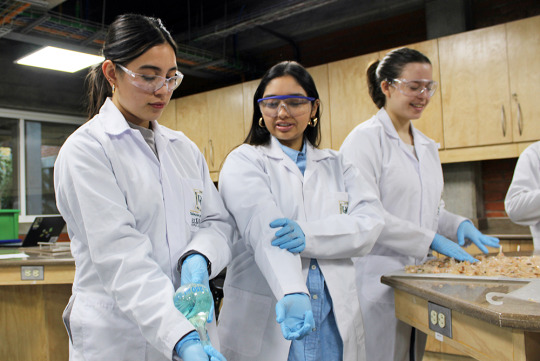

In a first for both universities, MIT undergraduates are engaged in research projects at the Universidad del Valle de Guatemala (UVG), while MIT scholars are collaborating with UVG undergraduates on in-depth field studies in Guatemala.
These pilot projects are part of a larger enterprise, called ASPIRE (Achieving Sustainable Partnerships for Innovation, Research, and Entrepreneurship). Funded by the U.S. Agency for International Development, this five-year, $15-million initiative brings together MIT, UVG, and the Guatemalan Exporters Association to promote sustainable solutions to local development challenges.
“This research is yielding insights into our understanding of how to design with and for marginalized people, specifically Indigenous people,” says Elizabeth Hoffecker, co-principal investigator of ASPIRE at MIT and director of the MIT Local Innovation Group.
The students’ work is bearing fruit in the form of publications and new products — directly advancing ASPIRE’s goals to create an innovation ecosystem in Guatemala that can be replicated elsewhere in Central and Latin America.
For the students, the project offers rewards both tangible and inspirational.
“My experience allowed me to find my interest in local innovation and entrepreneurship,” says Ximena Sarmiento García, a fifth-year undergraduate at UVG majoring in anthropology. Supervised by Hoffecker, Sarmiento García says, “I learned how to inform myself, investigate, and find solutions — to become a researcher.”
Sandra Youssef, a rising junior in mechanical engineering at MIT, collaborated with UVG researchers and Indigenous farmers to design a mobile cart to improve the harvest yield of snow peas. “It was perfect for me,” she says. “My goal was to use creative, new technologies and science to make a dent in difficult problems.”
Remote and effective
Kendra Leith, co-principal investigator of ASPIRE, and associate director for research at MIT D-Lab, shaped the MIT-based undergraduate research opportunities (UROPs) in concert with UVG colleagues. “Although MIT students aren’t currently permitted to travel to Guatemala, I wanted them to have an opportunity to apply their experience and knowledge to address real-world challenges,” says Leith. “The Covid pandemic prepared them and their counterparts at UVG for effective remote collaboration — the UROPs completed remarkably productive research projects over Zoom and met our goals for them.”
MIT students participated in some of UVG’s most ambitious ASPIRE research. For instance, Sydney Baller, a rising sophomore in mechanical engineering, joined a team of Indigenous farmers and UVG mechanical engineers investigating the manufacturing process and potential markets for essential oils extracted from thyme, rosemary, and chamomile plants.
“Indigenous people have thousands of years working with plant extracts and ancient remedies,” says Baller. “There is promising history there that would be important to follow up with more modern research.”
Sandra Youssef used computer-aided design and manufacturing to realize a design created in a hackathon by snow pea farmers. “Our cart had to hold 495 pounds of snow peas without collapsing or overturning, navigate narrow paths on hills, and be simple and inexpensive to assemble,” she says. The snow pea producers have tested two of Youssef’s designs, built by a team at UVG led by Rony Herrarte, a faculty member in the department of mechanical engineering.
From waste to filter
Two MIT undergraduates joined one of UVG’s long-standing projects: addressing pollution in Guatemala’s water. The research seeks to use chitosan molecules, extracted from shrimp shells, for bioremediation of heavy metals and other water contaminants. These shells are available in abundance, left as waste by the country’s shrimp industry.
Sophomores Ariana Hodlewsky, majoring in chemical engineering, and Paolo Mangiafico, majoring in brain and cognitive sciences, signed on to work with principal investigator and chemistry department instructor Allan Vásquez (UVG) on filtration systems utilizing chitosan.
“The team wants to find a cost-effective product rural communities, most at risk from polluted water, can use in homes or in town water systems,” says Mangiafico. “So we have been investigating different technologies for water filtration, and analyzing the Guatemalan and U.S. markets to understand the regulations and opportunities that might affect introduction of a chitosan-based product.”
“Our research into how different communities use water and into potential consumers and pitfalls sets the scene for prototypes UVG wants to produce,” says Hodlewsky.
Lourdes Figueroa, UVG ASPIRE project manager for technology transfer, found their assistance invaluable.
“Paolo and Ariana brought the MIT culture and mindset to the project,” she says. “They wanted to understand not only how the technology works, but the best ways of getting the technology out of the lab to make it useful.”
This was an “Aha!” moment, says Figueroa. “The MIT students made a major contribution to both the engineering and marketing sides by emphasizing that you have to think about how to guarantee the market acceptance of the technology while it is still under development.”
Innovation ecosystems
UVG’s three campuses have served as incubators for problem-solving innovation and entrepreneurship, in many cases driven by students from Indigenous communities and families. In 2022, Elizabeth Hoffecker, with eight UVG anthropology majors, set out to identify the most vibrant examples of these collaborative initiatives, which ASPIRE seeks to promote and replicate.
Hoffecker’s “innovation ecosystem diagnostic” revealed a cluster of activity centered on UVG’s Altiplano campus in the central highlands, which serves Mayan communities. Hoffecker and two of the anthropology students focused on four examples for a series of case studies, which they are currently preparing for submission to a peer-reviewed journal.
“The caliber of their work was so good that it became clear to me that we could collaborate on a paper,” says Hoffecker. “It was my first time publishing with undergraduates.”
The researchers’ cases included novel production of traditional thread, and creation of a 3D phytoplankton kit that is being used to educate community members about water pollution in Lake Atitlán, a tourist destination that drives the local economy but is increasingly being affected by toxic algae blooms. Hoffecker singles out a project by Indigenous undergraduates who developed play-based teaching tools for introducing basic mathematical concepts.
“These connect to local Mayan ways of understanding and offer a novel, hands-on way to strengthen the math teaching skills of local primary school teachers in Indigenous communities,” says Hoffecker. “They created something that addresses a very immediate need in the community — lack of training.
Both of Hoffecker’s undergraduate collaborators are writing theses inspired by these case studies.
“My time with Elizabeth allowed me to learn how to conduct research from scratch, ask for help, find solutions, and trust myself,” says Sarmiento García. She finds the ASPIRE approach profoundly appealing. “It is not only ethical, but also deeply committed to applying results to the real lives of the people involved.”
“This experience has been incredibly positive, validating my own ability to generate knowledge through research, rather than relying only on established authors to back up my arguments,” says Camila del Cid, a fifth-year anthropology student. “This was empowering, especially as a Latin American researcher, because it emphasized that my perspective and contributions are important.”
Hoffecker says this pilot run with UVG undergrads produced “high-quality research that can inform evidence-based decision-making on development issues of top regional priority” — a key goal for ASPIRE. Hoffecker plans to “develop a pathway that other UVG students can follow to conduct similar research.”
MIT undergraduate research will continue. “Our students’ activities have been very valuable in Guatemala, so much so that the snow pea, chitosan, and essential oils teams would like to continue working with our students this year,” says Leith. She anticipates a new round of MIT UROPs for next summer.
Youssef, for one, is eager to get to work on refining the snow pea cart. “I like the idea of working outside my comfort zone, thinking about things that seem unsolvable and coming up with a solution to fix some aspect of the problem,” she says.
#2022#3d#agriculture#algae#America#American#Anthropology#approach#back up#bearing#Brain#Brain and cognitive sciences#chemical#Chemical engineering#chemistry#chitosan#cluster#collaborate#Collaboration#collaborative#Community#computer#consumers#covid#D-Lab#Design#development#economy#engineering#engineers
0 notes
Text
nothing is funnier than talking about dnp to my non-phannie partner. today i was talking shit about dnp and the traumatic no-but-seriously-imagine-it video and they just went “do dan and phil like… know how you guys feel about them?” like how do i explain that yes, they do, and that’s why they torture us. dnp and phannies are a symbiotic love-hate relationship, trapped in a 15 year long cycle of trying to out-psychic-damage each other. we made their lives hell for 9 years and they’ve spent the last 6 getting their revenge and everyone is suffering but happy about it. all of us are mentally ill and a bit deranged and a danger to society and only when dnp and every single phannie is dead will the internet be free of our crimes. they love us and we love them and we are all slowly killing each other what part of that doesn’t sound appealing to you???
#dnp x phannies is toxic yaoi#we need to be studied in a lab#dnp#dan and phil#phan#dan howell#daniel howell#amazingphil#phil lester#yeet my deet#danisnotonfire#d&p#dip and pip#danandphilgames#no but seriously imagine it#yeet my deenp#phstudy
132 notes
·
View notes
Text
hyperspecific poll time!!!
#whirlywhat#op#one piece#monkey d. luffy#luffy#i missed out when these were popular ssorry if someone did this already. im procrastinating on my lab report#wano spoilers
362 notes
·
View notes
Text
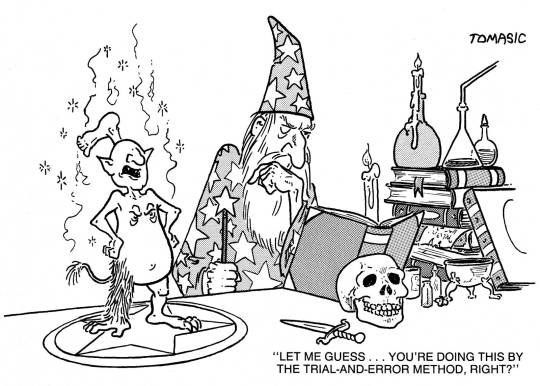
Measure twice, cast once (Richard Tomasic, "Dragonmirth," Dragon 113, September 1986)
#D&D#Dungeons & Dragons#Richard Tomasic#wizard#mage#Dragonmirth#gaming humor#demon summoning#demon#imp#Dragon magazine#Dragon Mirth#dnd#magic user#skull#wizard's laboratory#wizard's lab#pentagram#summoning circle#TSR#Dungeons and Dragons
264 notes
·
View notes
Text

133 notes
·
View notes
Text
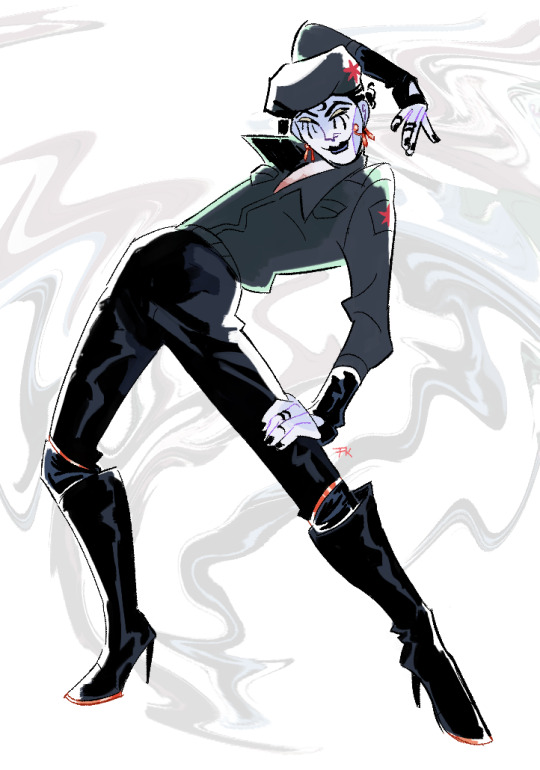

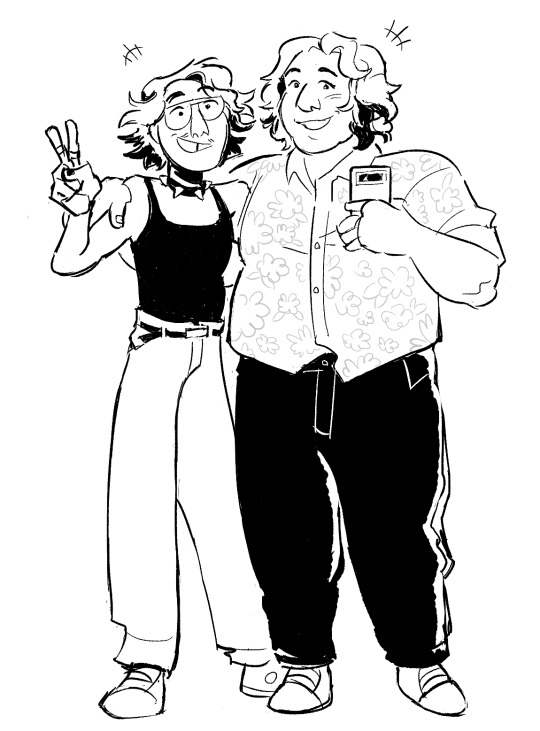


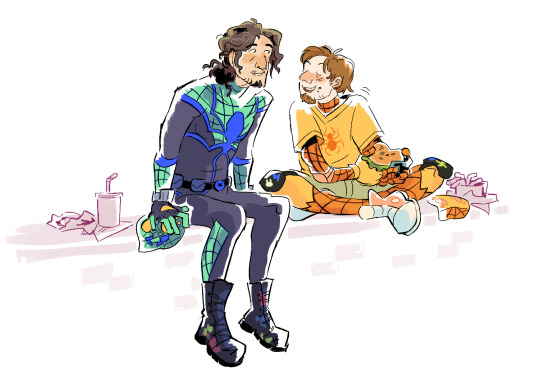
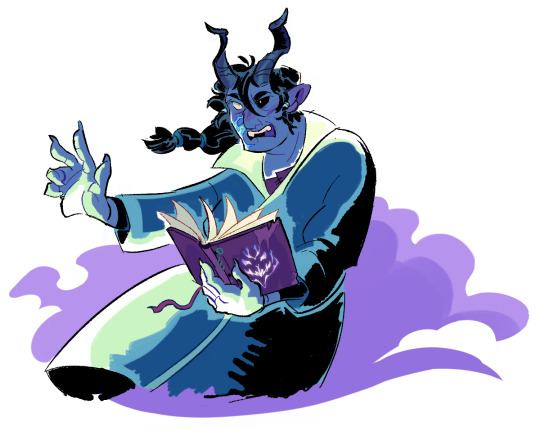
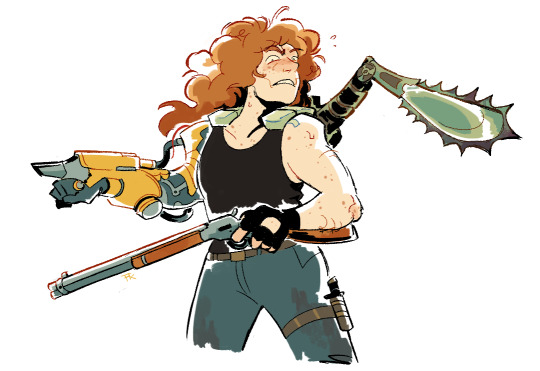
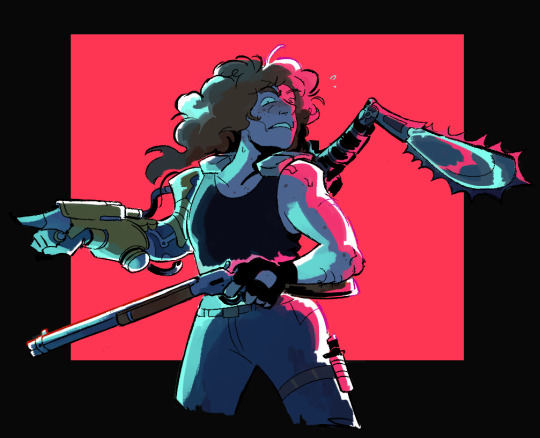
it is the time once more.... to post art i have made for money !! (part one)
below the cut are everyone's credits, thanks to everyone who commissioned me for your support :J
@hip-horror
@awe-24
@itsitself
arthur (done via email)
@werewolfnoir
@bonesawcowboy
werewolfnoir (once again)
hip-horror (again)
#lab creations#digital art#still closed by the way ! I may reopen them after i finish getting through the queue but i may also just focus on my own projects#i wish i knew a way to earn money through ad astra without getting d*sney on my ass lol
558 notes
·
View notes
Text



Anonymous asked: hii, saw your post asking for requests so... i think some headcannons on first impressions between eddie x reader (maybe they bump into each other during lunch, love this ideia for some reason), which reader is introverted and has a whismgoth/soft goth style (not exactly onto the subculture) would be awesome if you're ok writing it. thank you!
A\N: Hi! thanks for requesting this love the idea. sorry it took so long btw. i hope it's how you imagined it.
-okay, first of all, i can see him taking interest in th interoverted girl who is Whimsigoth and no one really pays attention to
-he had definitely noticed you before and stared at you several times (not in a creepy way, of course :))
-you had also noticed him and thought him and overall the hellfire club was cool, unlike the other students in the school.
-you where in your last year and so was he, even though you had a 2 year age difference (i saw somewhere that Eddie is 21 so we are gonna stick to that)
-before actually meeting you and talking to you, Eddie asked whoever he knew and could about you. "you and her are in the same history class, right?". "what is her name?" "how old is she?" yeah, literally everything
-and you always observed him. you noticed all the crazy shit he does and find it interesting\amusing\funny.
- you never had the courage to go and actually talk to him though.
-when you met was most likely the most awkward memory of both of your lives.
-you were walking in the cafeteria and the two of you bumped into each other.
-you where literally a blushing mess when that happened
-and he just scratched the back of his neck helping you pick your books up "uh....yeah...sorry about that"
-you'd shake your head trying to hide the blush "it's alright"
-after some moments of awkward silence and him helping you to pick your books up he finally talks "i like your style"
-you'll just smile, feeling a little flustered by the sudden attention "t-thanks"
-he'd chuckle finding your shyness interesting and kinda....cute?
-he would ask you to sit with him for lunch and even though you didn't really like talking to people you agreed.
-he introduced you to the hellfire club
-it would only last as a small 'hi' though because he would sit on the corner of the side of the table that was your side and you too would start talking.
-he would talk about DnD, metal music, etc. etc. etc. until.... "wait, you like Iron Maiden, Black Sabbath and Metallica?"
-your eyes lit up instantly and smiled "and here i was, thinking you can't get any cooler" he'd say with a smirk
-and of course, at the end of lunch you forgot to ask any actual information about each other: last name, age, etc, etc, etc.
-it's a good thing though, now you both have excuse's to see each other again ;)
#stranger things#80s#eddie munson x you#eddie munson x y/n#eddie munson x reader#eddie munson#eddie munson headcanons#hawkins indiana#stranger things x you#stranger things x y/n#stranger things x reader#stranger things headcanons#stranger things imagine#eddie munson imagine#hellfire club#hawkins lab#hawkins high#x reader#eddie x reader#d&d#stranger things cast#joseph quinn#joseph quinn x reader#joseph quinn x y/n#joseph quinn x you#stranger things cast x reader#headcanon#imagine#steve harrington#steve harrington x reader
93 notes
·
View notes